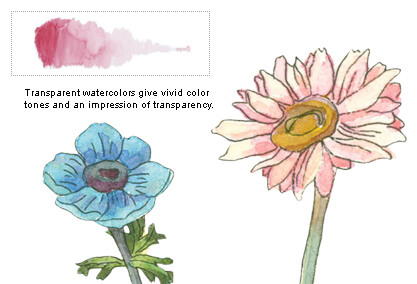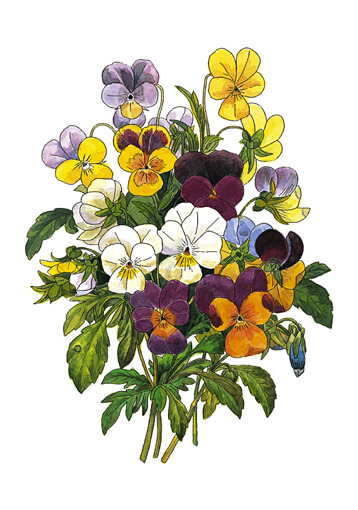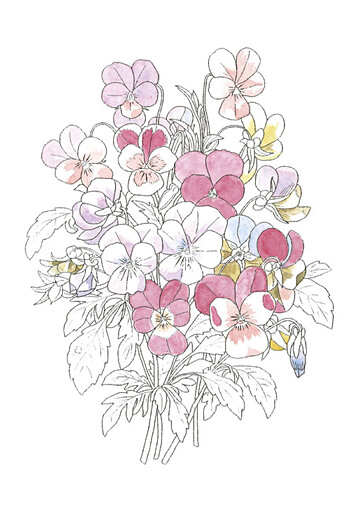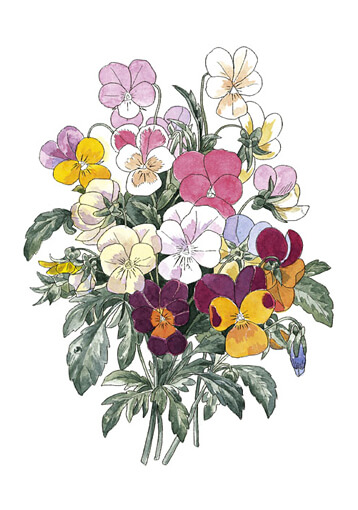Watercolors Lesson: How to Color
Watercolors: Key features

- ◆Transparent watercolors give vivid color tones and an impression of transparency.
- ◆Color layering gives depth to colors.
- ◆Control the amount of water to adjust the shade of colors, and according to the fine depiction or coloring of the planes, use brushes of differing thickness.
- ◆The secret of how to use watercolors is to create a tertiary color by layering primary colors on the picture surface (not mixing colors on the palette).












